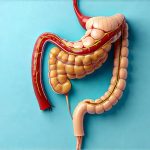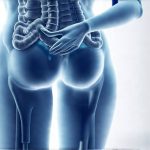The relationship between how we eat and our digestive wellbeing is often underestimated. We tend to focus on what we eat – macronutrients, micronutrients, dietary restrictions – but the how can be just as crucial, particularly for individuals navigating functional gastrointestinal disorders (FGIDs). These conditions, characterized by real symptoms without detectable structural abnormalities, are notoriously complex and heavily influenced by factors beyond diet alone. Eating speed, a seemingly simple aspect of our daily routine, significantly impacts the entire digestive process, from initial mechanical breakdown to nutrient absorption and gut motility. For those with FGIDs like Irritable Bowel Syndrome (IBS), Functional Dyspepsia (FD), or GERD, this impact can be amplified, potentially exacerbating symptoms or hindering effective management strategies.
Understanding the nuances of fast versus slow eating isn’t about adhering to rigid rules; it’s about recognizing how different approaches affect our bodies and tailoring habits to optimize individual digestive comfort. A rushed meal often means incomplete chewing, larger bolus sizes, and a faster transit time through the gut. Conversely, slower, more mindful eating promotes thorough mastication, smaller portions, and greater opportunity for enzymatic breakdown – all factors that can influence symptom presentation in FGIDs. This article will delve into these impacts, exploring how the speed of consumption interacts with the unique challenges faced by individuals living with functional digestive disorders, offering insights to help navigate a path towards improved wellbeing.
The Physiological Impacts Of Eating Speed
The human digestive system is remarkably adaptable but also relies on specific sequences and timings for optimal functioning. Fast eating disrupts these processes in several key ways. When food isn’t adequately chewed, it places greater strain on the stomach and intestines to break down large particles. This can lead to feelings of bloating, fullness, and discomfort, common complaints among those with FGIDs. Furthermore, quickly swallowing air (aerophagia) during rapid eating contributes to gas production and abdominal distension. The faster a meal is consumed, the less time the brain has to register satiety signals – leading to overeating and potential digestive overload.
Slow eating, on the other hand, encourages more complete digestion before the food even reaches the intestines. Thorough chewing initiates carbohydrate breakdown with salivary amylase, reduces particle size for easier enzymatic action in the stomach, and allows for better mixing with gastric juices. This can significantly reduce the workload of the small intestine, potentially minimizing malabsorption issues or fermentation that contribute to symptoms like diarrhea or bloating in conditions such as IBS. The slower pace also gives the brain time to recognize fullness cues, promoting a more appropriate portion size and reducing the risk of overstimulation of the digestive tract.
The impact extends beyond mechanical breakdown. Eating speed influences hormonal responses too. Rapid eating can cause larger fluctuations in blood sugar levels, potentially triggering symptoms for individuals with visceral hypersensitivity – a hallmark of many FGIDs where normal gut sensations are amplified and perceived as painful or uncomfortable. Slower eating allows for more gradual glucose absorption, contributing to better metabolic control and reducing the likelihood of symptom flares. It’s important to remember that these aren’t universal effects; individual responses will vary depending on the specific FGID and other contributing factors. Understanding what foods trigger bloating can also help manage symptoms.
How Eating Speed Affects Gut Motility
Gut motility – the coordinated contractions that move food through the digestive tract – is profoundly affected by eating speed. Fast eating can overwhelm the gut’s capacity to process food, leading to accelerated transit time or, paradoxically, erratic motility patterns. In conditions like diarrhea-predominant IBS (IBS-D), this rapid transit can exacerbate symptoms by preventing adequate water absorption, resulting in loose stools and urgency. Conversely, in constipation-predominant IBS (IBS-C), a rushed meal might not provide enough time for proper fiber breakdown, contributing to hard, difficult-to-pass stools.
The vagus nerve plays a crucial role in regulating gut motility. It acts as a communication pathway between the brain and the digestive system. Slow eating stimulates vagal nerve activity through mindful chewing and prolonged oral processing of food. This stimulation promotes parasympathetic nervous system activation – often referred to as “rest and digest” – which is associated with improved gut motility, reduced inflammation, and enhanced digestion. Fast eating, conversely, tends to activate the sympathetic nervous system (“fight or flight”), potentially leading to increased stress hormones and disrupted gut function. Considering slow gastric motility can also provide helpful insights.
Consider these steps for optimizing motility through mindful eating:
1. Sit down in a calm environment without distractions.
2. Take small bites of food.
3. Chew each bite thoroughly – aim for 20-30 chews per mouthful.
4. Put your fork or spoon down between bites.
5. Focus on the taste, texture and smell of the food.
The Role Of Visceral Hypersensitivity & Slower Eating
Visceral hypersensitivity (VHS) is a key feature in many FGIDs, meaning individuals experience pain or discomfort from normal digestive processes. This heightened sensitivity makes those with FGIDs particularly vulnerable to the negative effects of fast eating. Larger boluses of food, rapid gas production, or even normal gut contractions can be perceived as intensely painful or uncomfortable. Slower eating helps mitigate these effects by reducing the overall “burden” on the digestive system and minimizing potentially triggering stimuli.
The link between slow eating and reduced VHS isn’t fully understood but appears to involve several mechanisms. As mentioned earlier, slower eating promotes better digestion in the upper GI tract, resulting in less undigested food reaching the colon – which can trigger symptoms in IBS. It also reduces aerophagia (swallowing air) and minimizes distension of the gut, lessening the stimulation of visceral nociceptors (pain receptors). Furthermore, mindful eating practices associated with slower consumption encourage a sense of calm and relaxation, potentially downregulating the nervous system’s pain response. You may find sleep tips helpful for managing stress.
Mindfulness-based interventions, which often incorporate slow eating techniques, have shown promising results in managing VHS and reducing symptom severity in FGIDs. These interventions emphasize paying attention to bodily sensations without judgment – helping individuals develop a more nuanced understanding of their digestive experience and learn strategies for coping with discomfort. Understanding the difference between emptiness in the gut versus fullness can also be helpful.
The Impact On Functional Dyspepsia (FD)
Functional Dyspepsia (FD), characterized by chronic indigestion symptoms without identifiable organic disease, presents unique challenges in relation to eating speed. Individuals with FD often report early satiety (feeling full quickly), bloating, nausea, and epigastric pain. Fast eating can significantly exacerbate these symptoms by overwhelming the stomach’s capacity and disrupting normal gastric emptying. A large, rapidly consumed meal puts excessive pressure on the stomach walls, triggering discomfort and potentially delaying gastric emptying – leading to a feeling of fullness that persists long after eating.
Slower eating allows for better accommodation of food in the stomach, reducing pressure and promoting more efficient gastric emptying. Thorough chewing also helps break down food into smaller particles, easing the burden on the stomach and minimizing irritation. The slower pace gives the digestive system time to process food without being overloaded. Additionally, mindful eating techniques can help individuals with FD identify trigger foods or patterns that exacerbate their symptoms – empowering them to make informed dietary choices. Irregular eating habits can also contribute to FD. Consider the benefits of probiotics as well, though they have limitations.
Ultimately, understanding your individual response is paramount. What works for one person with an FGID may not work for another. Experimenting with different eating speeds and observing how it affects your symptoms, in consultation with a healthcare professional, is crucial for developing a personalized management strategy. Eating in public can be stressful – plan ahead!


















